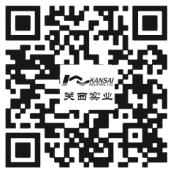+86-755-25628555
+86-18823796112
+86-18823796112




Product quality problems often occur in after-sales service, including product damage, functional failure, etc. To address these problems, the following solutions can be adopted:
1. Provide free repair or replacement services: For damaged products, free repair or replacement services can be provided to ensure the rights and interests of users.
2. Quality assurance commitment: By emphasizing the brand’s quality assurance and after-sales service system, consumers’ confidence in product quality is enhanced.
Logistics and distribution issues are important factors affecting after-sales service. Common problems include delayed delivery, inadequate delivery, etc. To resolve these problems, the following measures can be taken:
1. Establish an efficient distribution system: optimize logistics and distribution processes, improve distribution efficiency, and ensure that products can be delivered to consumers on time.
2. Provide real-time delivery tracking services: By providing real-time logistics tracking information, consumers can promptly understand the delivery status of orders and reduce uncertainty.
How to store RF coaxial cables
1. Environmental requirements:
- The storage environment should be kept dry and ventilated to avoid moisture, high temperature or direct sunlight.
- The temperature should be controlled between -10℃ and 40℃, and the relative humidity should not exceed 70%.
- Stay away from corrosive gases, chemicals or dust to prevent cable sheath from aging or damage.
2. Storage method:
- The cable should be coiled neatly to avoid excessive bending or twisting and prevent damage to the internal structure.
- The cable tray should be placed horizontally to avoid vertical stacking and prevent the underlying cable from being compressed and deformed.
- If stored for a long time, it is recommended to check the cable status regularly to ensure that there is no aging, deformation or damage.
3. Identification management:
- Each reel of cable should clearly identify the specifications, models, lengths and production dates for easy management and use.
- Cables of different specifications should be stored in a classified manner to avoid confusion.
---
Transportation specifications for RF coaxial cables
1. Packaging requirements:
- The cables should be secured using a solid cable tray or packaging box to prevent rolling or collision during transportation.
- Both ends of the cable should be sealed and protected to prevent moisture and dust from entering the interior.
- The outer packaging should be marked with "fragile products", "moisture-proof", "do not press" and other signs, and transport personnel should be reminded to handle it carefully.
2. Loading and unloading requirements:
- Professional lifting equipment should be used when loading and unloading to avoid direct dragging or throwing cables.
- During operation, you should hold it gently to prevent damage to the outer skin of the cable or deformation of the internal structure.
3. Transportation method:
- The transport vehicle should be kept smooth and avoid violent vibrations or sudden brakes.
- The cable tray should be securely secured to prevent sliding or tilting during transportation.
- During long-distance transportation, it is recommended to use a rainproof cloth to prevent cables from getting damp or contaminated.
4. Special environment transportation:
- Additional protective measures are required to ensure that the cable performance is not affected when transporting in extreme weather conditions (such as high temperatures, rain and snow).
---
Through standardized storage and transportation methods, the service life of RF coaxial cables can be effectively extended, ensuring stable performance, and providing customers with reliable product guarantees.

 QR code
QR code